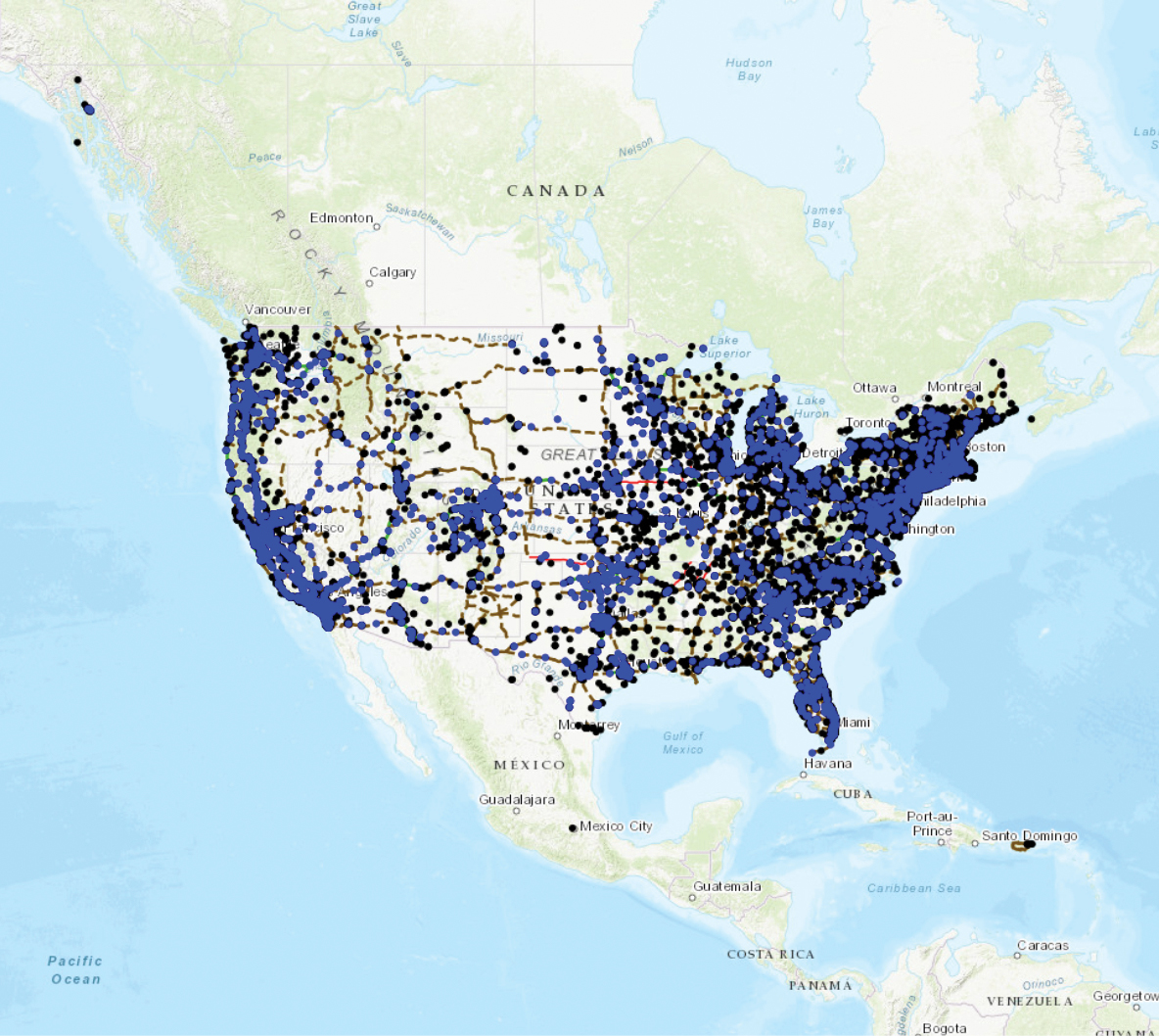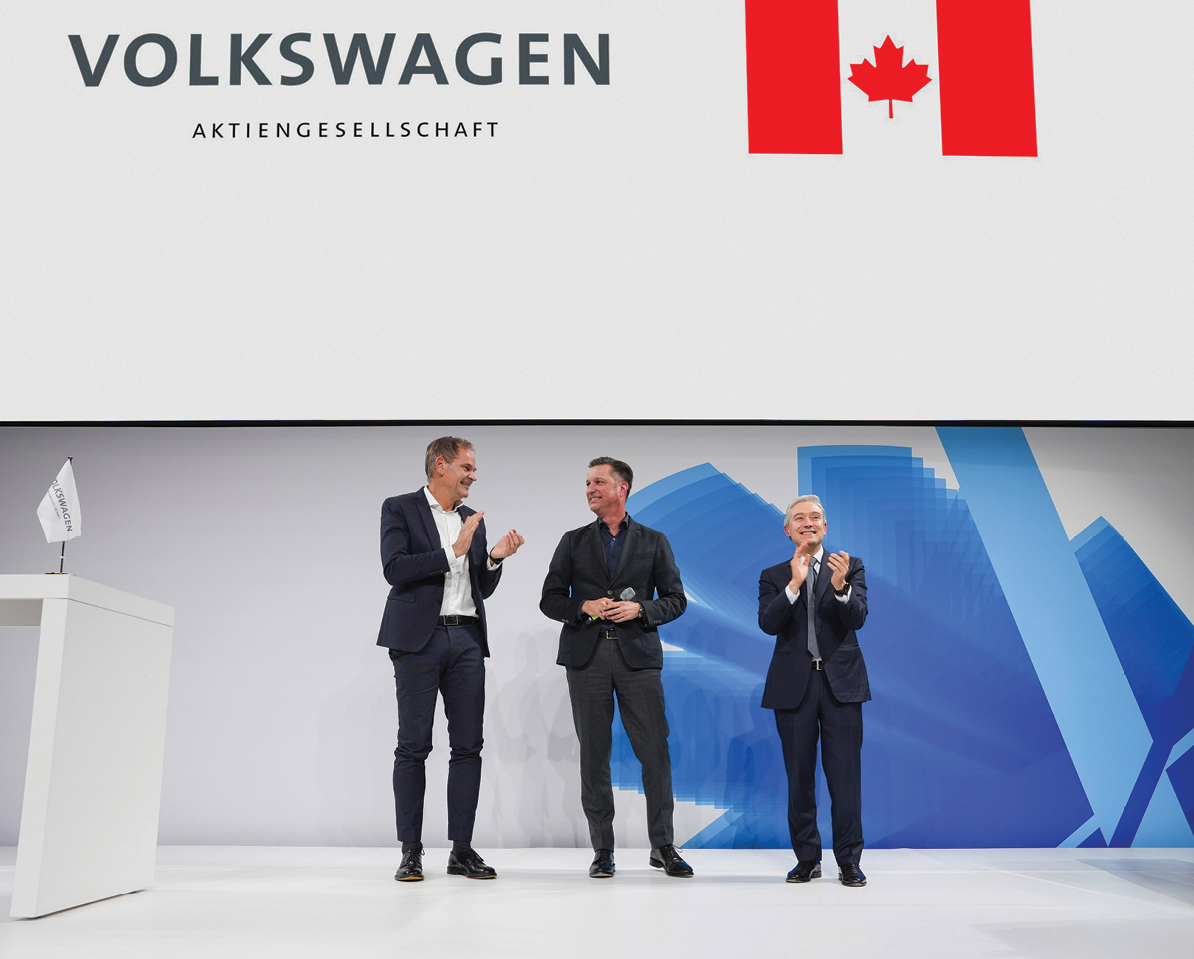The EV revolution appeared to have a full head of steam this time last year. This year blockbuster electric vehicle and battery manufacturing deals are rolling out as fast as a Tesla from a dead stop.
Since January 2021 EV sales in the U.S. have tripled (over 800,000 sold in 2022) while the number of available models has doubled, according to the U.S. EPA. There are over 130,000 public chargers across the country — a 40% increase over 2020. And the private sector has committed to more than $120 billion in domestic EV and battery investments since the Inflation Reduction Act (IRA) became law. That trend figures to accelerate even more now that more stringent federal consumer incentives will require vehicles to have U.S.-made battery systems.
How much do advanced manufacturing production credits matter? VW in March placed a pause on all European battery plant expansion activity while awaiting an EU response to the IRA. During an earnings call early this year, an analyst asked Tesla leaders about the impact of such incentives.
“You can do the math — if we were to get anywhere near 1,000 gigawatt-hours a year of production or even a few hundred gigawatt-hours, it’s very significant,” said Tesla CEO Elon Musk, according to the earnings call transcript. Noting that these domestic manufacturing credits will be split with battery maker Panasonic, he said, “The value of credits this year will not be gigantic, but I think it could be gigantic.”
Tesla CFO Zach Kirkhorn said while regulations and incentives are still in flux, the company expects those credits to be “on the order of $150 million to $250 million per quarter this year and growing over the course of the year as our volumes grow.”

The busy manufacturing supply chain for e-mobility is beginning to mirror this map of expanding EV charging infrastructure.
Map courtesy of U.S. Dept. of Energy
In March, the company was approved for a more than $330 million abatement by the Nevada Governor’s Office of Economic Development (GOED) Board for a planned $3.6 billion capital investment at its current site in Storey County where it will be required to create 3,000 jobs at an average hourly wage of $33.49.
“Tesla has far exceeded every promise they made going back to 2014,” said Nevada Governor Joe Lombardo. “To date, they have invested $6.2 billion in Nevada, built a 5.4-million-square-foot Gigafactory which provided 17,000 local construction jobs and created more than 11,000 highly paid permanent jobs.” Tesla plans to add 4 million sq. ft. in two new factories at its existing Gigafactory site. The new 100-gigawatt-hour battery cell factory will have enough capacity to produce batteries for 1.5 million light-duty vehicles annually. The other will be the company’s first Semi factory, a fully electric combination truck with 500 miles of range.
Blistering Pace
The Big Three aren’t just along for the ride: Ford is investing more than $50 billion in EVs globally through 2026 and targeting a production run rate of 2 million EVs globally by the end of that year. Even as it expects to lose $3 billion in its EV business in 2023, the company expects EVs to be half of its global vehicle sales volume by 2030. Meanwhile, Ford’s Ford Pro™ is expanding its service to commercial customers with the announcement of a new program with EY designed “to help fleets understand Inflation Reduction Act (IRA) electric vehicle tax credits.”
As that one company’s plan suggests, the pace of projects is enough to make your head spin.
Exhibit A: Two 300-job deals totaling $1.6 billion were announced on the same day in March in South Carolina that a $1.2 billion battery materials investment was announced in Indiana. All of those came in the same month as a $2 billion investment backed by VW in new production of an all-electric Scout in South Carolina and another billion-dollar VW investment in Ontario to build battery cells, part of a total of $193 billion the German company plans to spend over the next five years as it aims to launch an affordable EV by 2025.
Exhibit B: Nearly all of the North American Top Deals of 2022 saluted on p. 102 of this issue are in the EV and battery arena. Those deals spawn further deals as an entire economic sector gains altitude before our eyes. A spokesperson for French transportation industry quality management company TRIGO Group tells me the company is actively expanding operations and partnerships with battery suppliers and quality control specialists in the United States. How actively? “We have eight ongoing projects with key clients in the EV battery sector in North America,” she says. “This corresponds to a 100% increase in project numbers and 400% increase in revenue.”
As Minister of Economic Development, Job Creation and Trade Vic Fedeli tells me about the billions of dollars of investment landing in his province, “We are firing on all cylinders … a metaphor I won’t be able to use much longer.”
VW Scouts Out Opportunities in Ontario and South Carolina
I spoke to an understandably giddy Fedeli one morning in March as he took the rapid train to Toronto’s Pearson International Airport to fly home to North Bay — just after VW and its battery company PowerCo had announced their selection of St. Thomas, Ontario, to establish Volkswagen’s first overseas gigafactory for battery cell manufacturing but weeks before Ford in April pledged to invest C$1.8 billion in its Oakville Assembly Complex to transform it into a high-volume hub of EV manufacturing in Canada. Even before the VW announcement, Ontario had welcomed around $17 billion in automotive investment over a period of 30 months.

VW’s battery investment in St. Thomas and Ford’s April commitment in Oakville build on a 30-month period that saw $17 billion in automotive investment in Ontario.
Photos courtesy of VW and Ford
The VW team was nothing if not thorough, starting with an April 2022 meeting with Fedeli’s team and proceeding through now fewer than six in-person meetings among government and company leaders in Germany and in Ontario all the way up to the time of the March announcement, with consecutive weekly meetings beginning in October 2022.
Fedeli says there was a natural affinity due to the initial attraction of Ontario’s available critical minerals, plus an array of sites to choose from a highly skilled workforce. One of the most important meetings occurred when the Canadian delegation visited a test site for VW’s planned battery gigafactory in Germany.
“If Ontario were successful, this would be what it looks like,” Fedeli says. “I saw acres and acres of compacted flatland and I said, ‘Yes, we can do that for you, and we also have every single other thing you need.’ ”
Thanks to a megasite development program launched in 2019, the province had sites ready to show VW, including the parcel in St. Thomas, which VW has added to with additional parcels in a community once home to a major Ford plant. The properties in adjoining communities were amalgamated under St. Thomas, Fedeli says, with a revenue sharing arrangement worked out between the municipality and neighboring Elgin County. Workforce skills and clean energy were further check marks. Meanwhile, the desire for access to critical minerals such as nickel, chromite, lithium and rare earth minerals was central against the context of an MOU signed with Canadian Prime Minister Justin Trudeau last August with regard to raw material security. The day after that signing, Fedeli says, Ontario Premier Doug Ford met with the German chancellor and they agreed on the stipulation that any minerals extracted in Ontario would be expected to be processed in Ontario. “The chancellor’s answer was, ‘As it should be,’ ” Fedeli says.
Healthcare & Tariffs Matter
Then, Fedeli says, his team was able to add a couple of other things to the discussion: the value of the Canadian dollar, “and our universal healthcare was a very important factor. Walk down the street and break your leg, an ambulance takes you to the hospital, you show your provincial health card and that’s it. It can be $10 million to $50 million of savings a year.” U.S. site selection consultants are frequently aghast, he says. “Nowhere on their matrix are points for healthcare benefits.”
Asked about the current discussion of employer-backed childcare, he says, “That’s easy to answer. It’s $10 a day for childcare in Ontario. We fought very hard and our government is funding a portion of it. The deal has been in place for a long time and now we’re building facilities.”
Then there’s that little tariff difference.
“You can export from Ontario to 50 countries tariff-free,” Fedeli explains. “Making it in the states means a 3.7% tariff.” It’s just one part of a binational situation that could be better.
“We’re always trying to do more business across the border,” Fedeli says, noting that his country could do tens of billions of dollars in interprovincial trade too “if we had a good clean system.” As for U.S.-Canada ties, “We need each other,” he says. “We are both integral parts of making a vehicle, plain and simple. When you hear some of the protectionist language, it should be alarming to businesses. Nine million Americans wake up every morning to make things to ship to Canada.”
The next step for Ontario’s team, he says, is component suppliers. “You need a cathode plant, anodes, separators, copper foil, lithium hydroxide, and each of those is a billion-dollar plant.”
The project ties in directly to VW’s North American strategy, which includes ramped-up assembly of the all-electric ID.4 compact SUV in Chattanooga, Tennessee; around 200 software engineers and developers in Silicon Valley and Seattle in its CARIAD technology and software company; and what VW says are “plans to upgrade plants in Puebla and Silao, Mexico, for the assembly of BEVs and potentially for BEV components such as electric motors in the second half of the decade.”
It also includes that bet on an all-electric SUV version of the rugged Scout vehicles produced from 1960 to 1980. Just before the St. Thomas announcement, VW announced that its Scout Motors would establish its first manufacturing plant in Blythewood, South Carolina, not far from the state capital of Columbia. The company’s $2 billion investment has the potential to create 4,000 or more permanent jobs. At full capacity, more than 200,000 Scout vehicles may be produced annually. The company scouted 74 sites before choosing the site in Blythewood, and lauded a negotiation process that instead of taking a typical 18 months instead took two.
“Scout has been an American icon since introducing an SUV in 1960,” said Scout Motors President and CEO Scott Keogh. “It’s the vehicle that took your family on a camping trip, that gave access to the great outdoors, and that showed up on the job site every morning. Today, we’re reimagining Scout’s original ingenuity and electrifying its future. We’re bringing the Scout spirit to South Carolina and it’s going to be a hell of a ride.”
Ask anyone in the current automotive scene and they’ll tell you: It already is.

